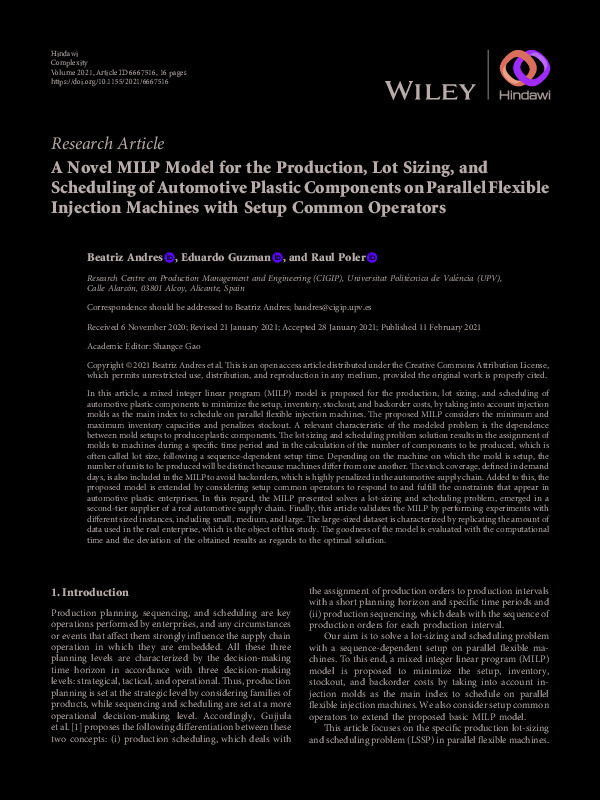JavaScript is disabled for your browser. Some features of this site may not work without it.
Buscar en RiuNet
Listar
Mi cuenta
Estadísticas
Ayuda RiuNet
Admin. UPV
A Novel MILP Model for the Production, Lot Sizing, and Scheduling of Automotive Plastic Components on Parallel Flexible Injection Machines with Setup Common Operators
Mostrar el registro completo del ítem
Andres, B.; Guzmán-Ortiz, BE.; Poler, R. (2021). A Novel MILP Model for the Production, Lot Sizing, and Scheduling of Automotive Plastic Components on Parallel Flexible Injection Machines with Setup Common Operators. Complexity. 2021:1-16. https://doi.org/10.1155/2021/6667516
Por favor, use este identificador para citar o enlazar este ítem: http://hdl.handle.net/10251/187204
Ficheros en el ítem
Metadatos del ítem
| Título: | A Novel MILP Model for the Production, Lot Sizing, and Scheduling of Automotive Plastic Components on Parallel Flexible Injection Machines with Setup Common Operators | |
| Autor: | Guzmán-Ortiz, Brunnel Eduardo | |
| Entidad UPV: |
|
|
| Fecha difusión: |
|
|
| Resumen: |
[EN] In this article, a mixed integer linear program (MILP) model is proposed for the production, lot sizing, and scheduling of automotive plastic components to minimize the setup, inventory, stockout, and backorder costs, ...[+]
|
|
| Derechos de uso: | Reconocimiento (by) | |
| Fuente: |
|
|
| DOI: |
|
|
| Editorial: |
|
|
| Versión del editor: | https://doi.org/10.1155/2021/6667516 | |
| Coste APC: |
|
|
| Código del Proyecto: |
|
|
| Agradecimientos: |
Thiis work was supported by the Conselleria de Educacion, Investigacion, Cultura y Deporte-Generalitat Valenciana for hiring predoctoral research staff with Grant no. ACIF/2018/170 and European Social Fund with Grant ...[+]
|
|
| Tipo: |
|









